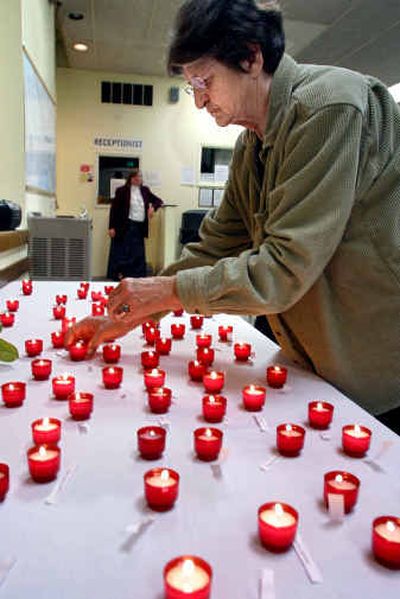Service honors homeless

SEATTLE – In 2004, the number of homeless deaths in Seattle grew to 152, a list of names that took 52 minutes to read during a recent annual candlelight memorial.
“The list this year is longer than it’s ever been,” said Pastor Sue Wanwig of the Compass Center, a Seattle-based center for homeless and low-income people that has organized the annual memorial service for more than 20 years.
The list has grown in part because of efforts by the King County Medical Examiner’s Office to notify groups like the Compass Center of homeless deaths, said Pat Simpson, pastor at the Church of Mary Magdalene, a congregation for homeless women.
Last year a local group, Women In Black, which holds candlelight vigils any time a homeless person dies, formally asked the medical examiner to compile the names of people who were either found dead outdoors or who died in local hospitals with no known addresses, Simpson said.
Now, the medical examiner releases a quarterly spreadsheet with the cause and location of each death, the person’s approximate age, race, and if it can be determined, his or her name, she said.
“Aside from the basic principle that everyone should be remembered at the time of their death, for me the importance of this service is being confronted with the mass of candles and that long list of names,” Simpson said.
At Friday’s memorial service, Paige Crapo sat in the front row, sobbing as name after name turned out to be someone she’d known. One had been her own drug and alcohol counselor. Another, once a journalist, had come to Seattle from Michigan and died alone in his room.
“Such a smart fellow, so talented – it’s just heartbreaking,” Crapo said, her eyes red from crying.
The slide from solvency to dependence, employment to living on the street can be closer than anyone cares to admit, said Ramona Smith, 43, a former factory worker in Auburn who saw her colleagues laid off one by one until she, too, found herself looking for shelter.
“I’m just another statistic out there, trying to make it and stay off the street,” she said before leaving the service.